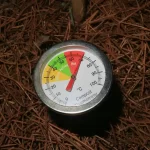Your Trees Are Asleep – Dormant Season Pruning That Won’t Make Your Trees Cry
Why Winter Is the Best Time to Sneak Up on Your Trees
So, here is the deal. When the leaves are off the trees and everything looks a little bare and sleepy, that is not just winter doing its thing. That is your cue. That is what gardeners call the dormant season, and it is hands-down the best time to pull out your pruners and give those trees and shrubs a good cleanup. Why? Because they are basically in nap mode, and cutting them now is less likely to send them into shock. Think of it like trimming your hair while you are sleeping – painless and surprisingly productive.

Let me walk you through how I go about dormant pruning without getting too textbook-y. This is the method I use every winter, and it works wonders, especially if you are dealing with fruit trees, roses, or any deciduous shrubs. Grab your clippers, a good jacket, and maybe a thermos of something warm. Let us do this.
First Start Below the Belt (Well, the Graft)
Take a close look near the base of your tree or shrub. See anything sprouting from below that weird swollen spot where the top meets the bottom? That is the graft union, and anything growing from below that point is not your tree. That is rootstock growth trying to steal the show. Cut that stuff off, right at the base. It is like your plant has a rebellious cousin living in the basement. No good can come from letting it take over.
Dead, Diseased, or Damaged? Say Goodbye
Now, go branch hunting. I mean really look. You want to find anything that looks off – we are talking dead, diseased, or just plain busted up wood.
Branches that are a weird color or look like they have been through a war? Suspect. Blisters, cracks, dark patches? Also suspect. I usually take a pocketknife and nick the tip of any suspicious branch. If the inside is brown, that branch is toast. But if it is green? It is still alive and kicking. Keep cutting back until you hit green, then stop there. That is your living wood.
Clear the Middle: Trees Are Not Big Fans of Crowding
If your tree is sending branches right through its own center, that is a no-go. It blocks air circulation and turns your lovely plant into a fungal party zone. Snip those inward-crossing limbs. You want light and air moving freely through the middle. Trust me, it makes a huge difference. This step in tree pruning is especially helpful for preventing disease.
One Tree, One Boss: Ditch the Competing Leaders
Here is something I learned the hard way. If your tree has more than one strong, vertical limb trying to become the main trunk, stop it. Choose one. The tallest, healthiest one, usually. The rest? Cut them out. This is especially important for young trees. Too many leaders means a confused tree that wastes energy. It can end up splitting down the middle later on. Nobody wants a self-destructing maple.
Shape It Like You Mean It (But Know What You Are Shaping)
Now is the fun part – shaping. I always take a step back here. Literally. Stand a few feet away and just look at the plant. What is the vibe? Some trees like a low, reachable canopy (looking at you, apple trees), while others shine with a rounded or vase-like shape.

Maples? I go for that soft, dome-shaped crown. Roses? Low and open, kind of like a fancy bowl. Learn the natural shape of your plant and go with it. No one wants a bonsai-shaped pear tree. Unless you are really into that kind of thing.
Watch Out for Water Sprouts: The Sneaky Freeloaders
If you grow fruit trees, this one is for you. Water sprouts are those super straight, pale, skinny shoots that pop up from branches like they are trying to win a race to the sky. They are not helpful. They do not fruit. They just suck up energy. Snip those off. Real fruiting wood is usually darker, thicker, and has a nice zigzag to it. If it looks like a rocket, it is a sprout. It has to go.
Clean-Up Is Not Optional: Say Goodbye to Bugs and Fungus
Once you are done snipping, do not leave a mess behind. Fallen leaves, twigs, and pruned bits can harbor insects and diseases like a cheap motel. Rake them up and toss them in the compost (unless they are diseased – in that case, burn or trash them).
A Few Extra Tips From My Toolbox
Let me share some things I never skip:
- Sharpen your tools before you start. It is easier on your plants and your wrists.
- After pruning, I usually spray with a dormant oil or a lime-sulfur mix. It knocks out overwintering pests that like to lurk in crevices and bark folds.
- The tools I keep handy: hand pruners for small stuff, loppers for thicker branches, a pruning saw for the stubborn wood, and a pole pruner if your tree got a little ambitious last summer.
What If I Miss the Dormant Window?
If you are wondering whether you can just do this whenever – not really. Once the sap starts flowing and the leaves begin to bud, pruning becomes riskier. You could end up with heavy sap bleeding or worse, set back the plant’s growth. So do your pruning before spring gets serious.
From One Gardener to Another
I have pruned my share of trees – some turned out great, some got a little wonky. You learn by doing. The most important thing? Do not be afraid of making a mistake. Trees are resilient. They will forgive a bad haircut or two.
So grab your shears, wait for a clear winter day, and give your plants a little TLC. Come spring, they will reward you with strong growth, better shape, and in the case of fruit trees – way easier harvests.
Go prune something. You got this.


